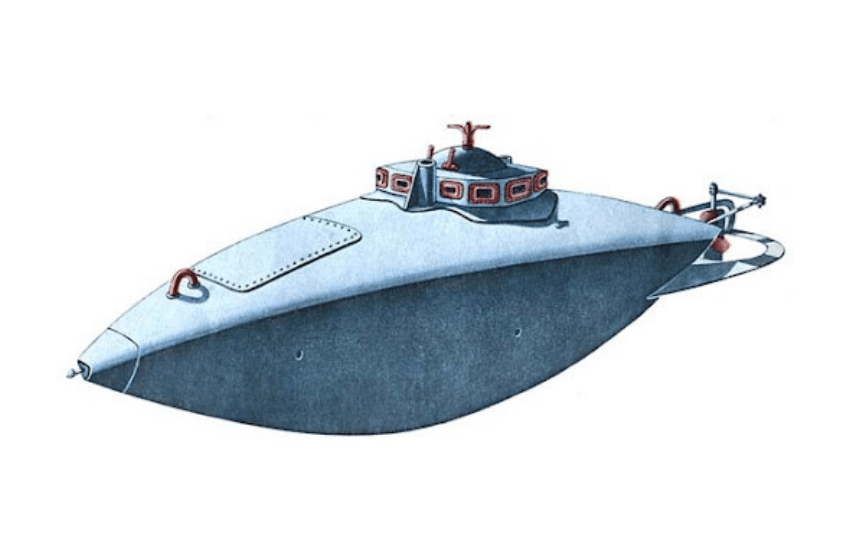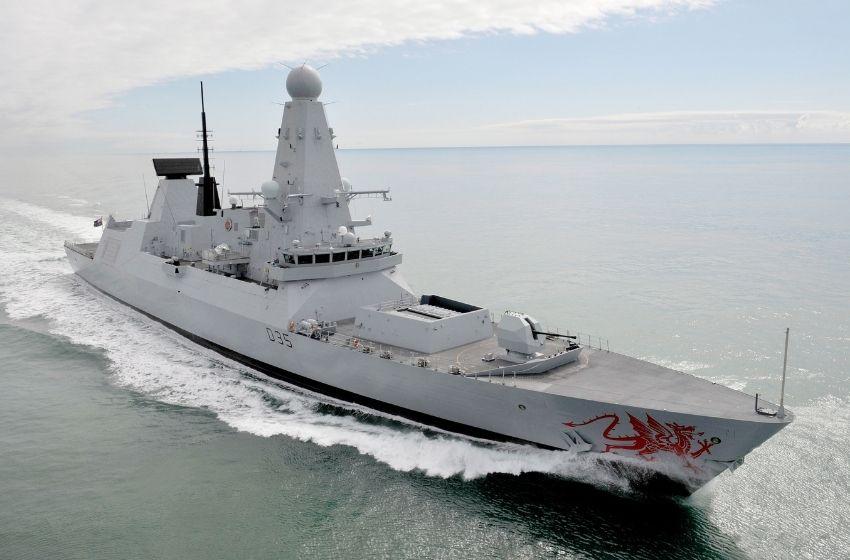The prototype of the first submarine of the Russian Empire for an assembly production was created at the Fountain district of Odessa by Stepan Karlovich Dzhevetsky.
In 1869, the French brilliant science fiction writer Jules Verne in his fantastic novel "20 Thousand Leagues Under the Sea" anticipated the creation of combat submarines for several decades. But the very idea of ​​a submarine with the ability to destroy enemy ships from under the water had already appeared to Leonardo da Vinci.

In 1877, Stepan Karlovich Dzhevetsky, engineer graduated in Paris and voluntary officer in the Russian Imperial Navy during the Russian-Turkish war, was shocked by the tragic experience of the battle of the Russian steamboat Vesta with the Turkish armoured battleship Feht-i Buland.
In the fight with that miracle of naval technology for the time, the Russian steamer was literally riddled and more than half of the crew died. Dzhevetsky received the military decoration of St.George Cross for bravery and was disbanded. But a project was born in his mind.
At the end of the 19th century, some experiments were made to build operating submarines in several countries. But almost all of them were imperfect and attempts to use them in combat ended in the death of the crew. But the Odessa invention by Dzhevetskiy regularly submerged in the water and became the first fully fledged submarine.
A beer barrel underwater
After the Vesta's crew was disbanded, Stepan Dzhevetsky settled at his Odessa dacha. After several months of hard work, he visited Guillet Blanchard, who was at that time the owner of a mechanical plant, with a thick roll of drawings. Taking a quick glance at the project, Blanchard said that he had strong doubts on the flotation of the future submarine. But the factory owner's doubts were dispelled by the amount of money offered for the deal by Dzhevetskiy. The manufacture of "Mr. Jules Verne's submarine" quickly became the subject of gossip and gossip among the urban public. Few believed in the possibility of building such a fantastic ship.
After several months of hard work, the "underwater beer barrel" was finally made. But the inventor did not have enough money for a complex mechanical "stuffing". And then the famous philanthropist, merchant of the first guild and banker Fyodor Rodokanaki joined in. After he paid the required amount, the Odessa "Nautilus" was launched.
Dangerous tests in Odessa harbour
Throughout the summer of 1878, Stepan Dzhevetsky personally piloted his underwater vehicle in the Odessa harbour. The tests did not always resemble easy walks underwater. During an attempt to sail under the bottom of the yacht "Ereklik" in the Odessa roadstead, the underwater vehicle caught the keel of the ship with a glass cabin. According to the recollections of Stepan Karlovich himself, only luck then saved the inventor and his brainchild.
The first Russian submarine was equipped with a bicycle drive, the air supply was enough for only 20 minutes, but it could actually dive to a depth of about 14 meters and carry out combat missions. The submarine's combat capability was demonstrated in early autumn to Admiral of the Black Sea Fleet Nikolay Andreyevich Arkas. Stepan Dzhevetsky, having overcome more than 200 meters under water, brought a mine to the barge and successfully detonated it. The excited admiral telegraphed to St. Petersburg to report the appearance in the Russian Empire of a new miracle weapon.

Orchids from the sea bottom
The efforts of the inventor were not in vain. When in St.Petersburg, he presented his project and the Admirl Arkas's feedback to the Dobroflot Marine Technical Committee. Having received approval and 20 thousand rubles in subsidies, he began to build a second submarine, which was destined to be shown to the Tsar Alexander III and his wife Maria Fedorovna.
The official test of the apparatus took place at the Silver Lake in Gatchina (St.Petersburg region), in 1880. It is noteworthy that the success of the brainchild of Dzhevetsky was decided by a flattering demonstration by the inventor. Having surfaced in front of the pier, Dzhevetsky deftly extracted from the bowels of the submarine a bouquet of orchids, beloved by the Empress, and presented her with the words: "Tribute by Neptune to Your Majesty!" Before such an impressive act, the Tsar immediately gave instructions to build 50 submarines and pay the inventor 100 thousand rubles (about a million modern dollars).
After the construction of 50 submarines, Stepan Dzhevetsky became fabulously rich. The career of a military inventor went up sharply, after receiving the first bonus by the Tsar, Dzhevetsky repeatedly received grants and awards for his inventions, which concerned a wide variety of fields of knowledge, from aeronautics to electric fields. But submarines still remained a priority in his projects. Subsequently, he designed more than 11 different models of submarines, including even an underwater battleship.
Most of the underwater prototypes of Dzhevetsky were used until the beginning of the twentieth century in the southern ports of the empire for defense and underwater work, and with the beginning of the Russo-Japanese War, the experience of serial construction of submarines was useful for creating a squadron of combat submarines.
Mummy's head in a suitcase
But the passion of Stepan Karlovich was not limited only to military invention. According to the memoirs of contemporaries, he was known as a considerable eccentric. He was fond of collecting various antiquities and furnished his Parisian mansion with "various cute antique gizmos", which he collected all over the world.
In 1887, while travelling along the Nile, Dzhevetsky bought "on occasion" the head of an Egyptian mummy, more than four and a half thousand years old. On the way back to Russia, he was forced to explain for a long time with the Russian border guards, who insistently demanded an explanation about the origin of the mummified head and whether he had killed the "Egyptian bourgeois woman."
Today, the only remaining prototype of a Dzhevetsky's submarine is in the Central Naval Museum of St.Petersburg.




















